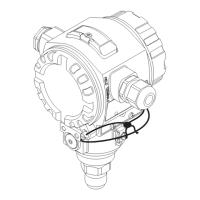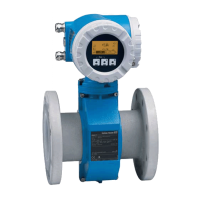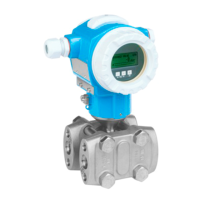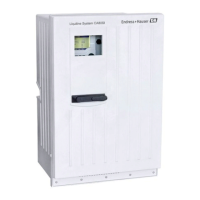Commissioning Waterpilot FMX21
58 Endress+Hauser
A0018763
1 HART master, PLC (programmable logic controller)
2 Multidrop connector FXN520
3 Temperature head transmitter TMT182
4 Waterpilot FMX21
Adjustment of the Waterpilot for level measurement
1 Select the "Level" measuring mode via the "Measuring mode" parameter.
Menu path: Setup → Measuring mode
L
WARNING
Changing the measuring mode affects the span (URV)
This situation can result in product overflow.
‣
If the measuring mode is changed, the setting for the span (URV) must be checked in the "Setup"
operating menu and readjusted if necessary.
2 Select a pressure unit via the "Press. eng. unit" parameter, here "mbar" for example.
Menu path: Setup → Press. eng. unit
3 The sensor is unpressurized, perform a position adjustment → 40
4 Set the output current to "Fixed" 4.0 mA via the "Current Mode" parameter.
Menu path: Expert → Communication → HART config
5 Perform level adjustment (wet or dry)
6 Configure an address ≠0 using the "Bus address" parameter, e.g. bus address = 1.
(HART 5.0 master: Range 0 to 15, where address = 0 calls up the "Signaling" setting; HART 6.0 master:
Range 0 to 63)
Menu path: Expert → Communication → HART config
The output current of the temperature head transmitter used must also be set to "Fixed" and have a
HART address other than zero (e.g. address = 2).
7 Result: By calculating the pressure signal and temperature signal in a suitable HART master (e.g. PLC), a
corrected level value can be determined for a chosen medium using a suitable density function.
9.11.3 Automatic density compensation using an external
temperature signal for calculation in the FMX21
Example:
In this example, the FMX21 with an integrated Pt100 is connected to a HART-compliant
temperature head transmitter via the common communication bus. In this case, the signal
of the Pt100 is analyzed using a HART-compliant (min. HART 5.0) temperature head
transmitter that supports burst mode. The change in the water density caused by changing
temperatures is automatically factored into the level signal by activating the automatic
density compensation.

